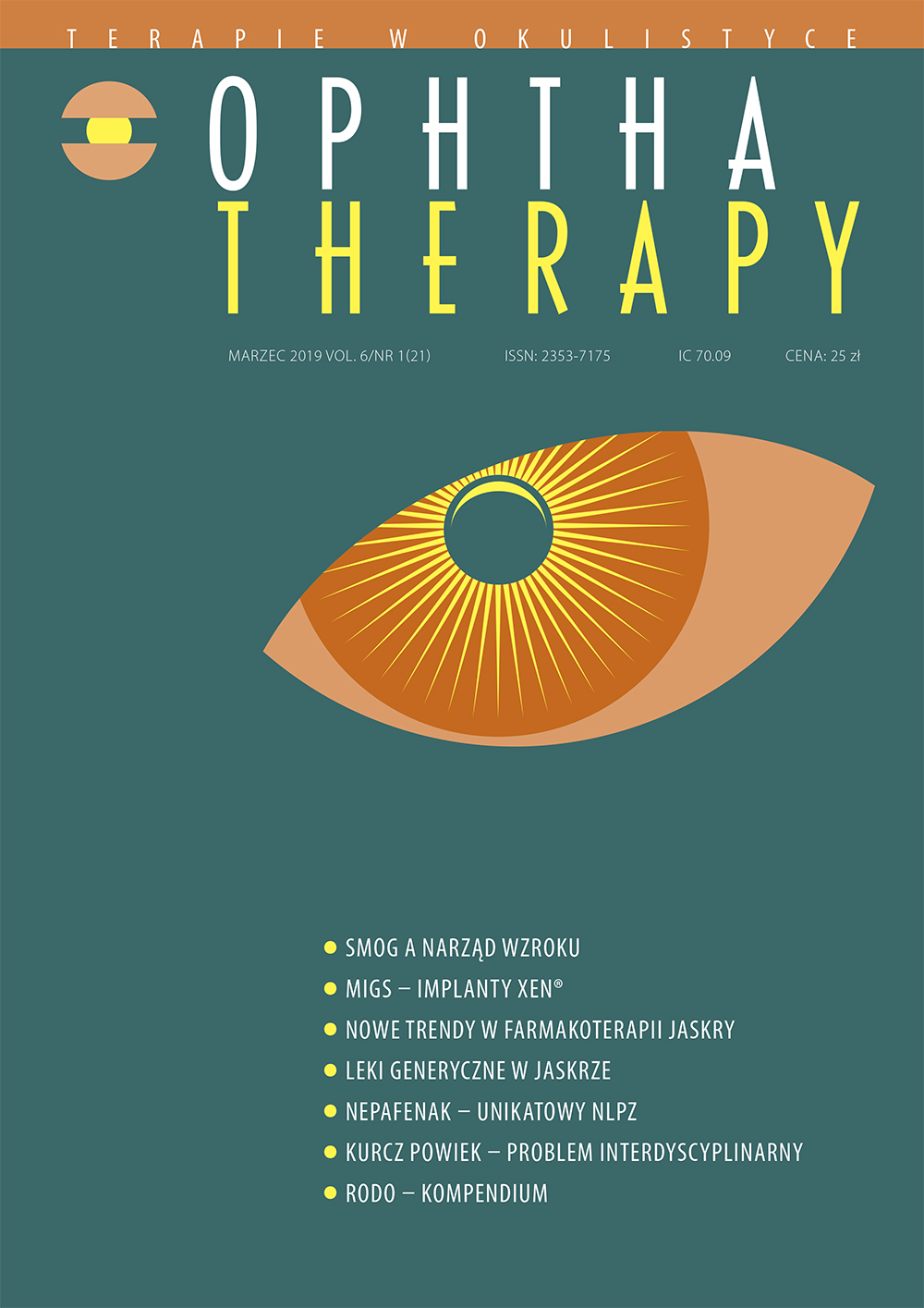Glaucoma and generics in Europe
Main Article Content
Abstract
Original drugs and generic drugs used in glaucoma differ from each other. This can lead to worse drug tolerability and, as a result, to worse patients’ compliance. Therefore, an essential issue is, besides the drug’s efficacy, its optimal tolerability for the patient. The potential differences in viscosity, pH, drop size, and surface tension has a potential strong influence on the complex delivery mechanism of the active molecule to the receptors in the eye and its clinical relevant efficacy. These differences, in addition to different appearance and handling of a “new” bottle, may pose problems with patients’ compliance after using a new preparation.
Downloads
Article Details

This work is licensed under a Creative Commons Attribution-NonCommercial-NoDerivatives 4.0 International License.
Copyright: © Medical Education sp. z o.o. License allowing third parties to copy and redistribute the material in any medium or format and to remix, transform, and build upon the material, provided the original work is properly cited and states its license.
Address reprint requests to: Medical Education, Marcin Kuźma (marcin.kuzma@mededu.pl)
References
2. Center for Drug Evaluation and Research. Guidance for Industry: Bioavailability and Bioequivalence Studies for Orally Administered Drug Products – General Considerations. U.S. Department of Health and Human Services Food and Drug Administration 2003.
3. Committee for Medicinal Products for Human Use. Guideline on the Investigation of Bioequivalence. European Medicines Agency 2010. Online: http://www.ema.europa.eu/docs/en_GB/document_library/Scientific_guideline/2009/09/WC500003388.pdf.
4. Holló G, Hommer A. Delivery of Glaucoma Care Committee of the European Glaucoma Society. The status of glaucoma diagnostics and care in Europe in 2015: a European survey. Eur J Ophthalmol. 2016; 26(3): 216-20. https://doi.org/10.5301/ejo.5000699.
5. Kahook M, Fechtner RD, Katz LJ et al. A comparison of active ingredients and preservatives between brand name and generic topical glaucoma medications using liquid chromatography-tandem mass spectrometry. Curr Eye Res. 2012; 37(2): 101-8. https://doi.org/10.3109/02713683.2011.631722.
6. Leitritz MA, Lipp HP, Voykov B et al. Original preparations versus generics – latanoprost: how similar is different? Ophthalmologe. 2015; 112(2): 127-39. https://doi.org/10.1007/s00347-014-3097.
7. Mammo ZN, Flanagan JG, James DF et al. Generic versus brand-name North American topical glaucoma drops. Can J Ophthalmol. 2012; 47(1): 55-61. https://doi.org/10.1016/j.jcjo.2011.12.004.
8. OECD/EU. Health at a Glance: Europe 2014. OECD Publishing, Paris 2014. Online: https://doi.org/10.1787/health_glance_eur-2014-en.
9. Rossetti L, Digiuni M, Giovanni M et al. Blindness and Glaucoma: A Multicenter Data Review from 7 Academic Eye Clinics. PLoS One. 2015; 10(8): e0136632. https://doi.org/10.1371/journal.pone.0136632.
10. Quigley HA. Number of people with glaucoma worldwide. Br J Ophthalmol. 1996; 80: 389-93.
11. Online: https://www.eugs.org.

